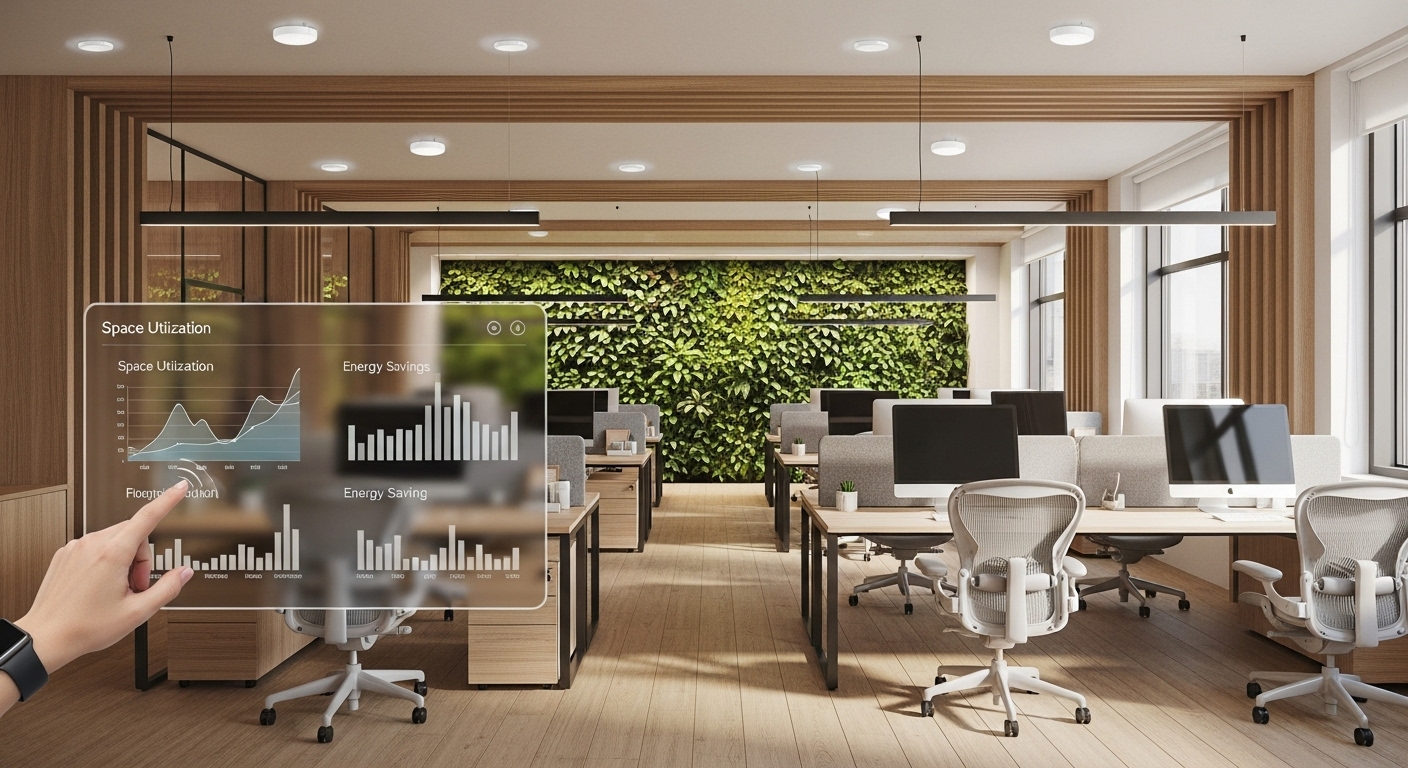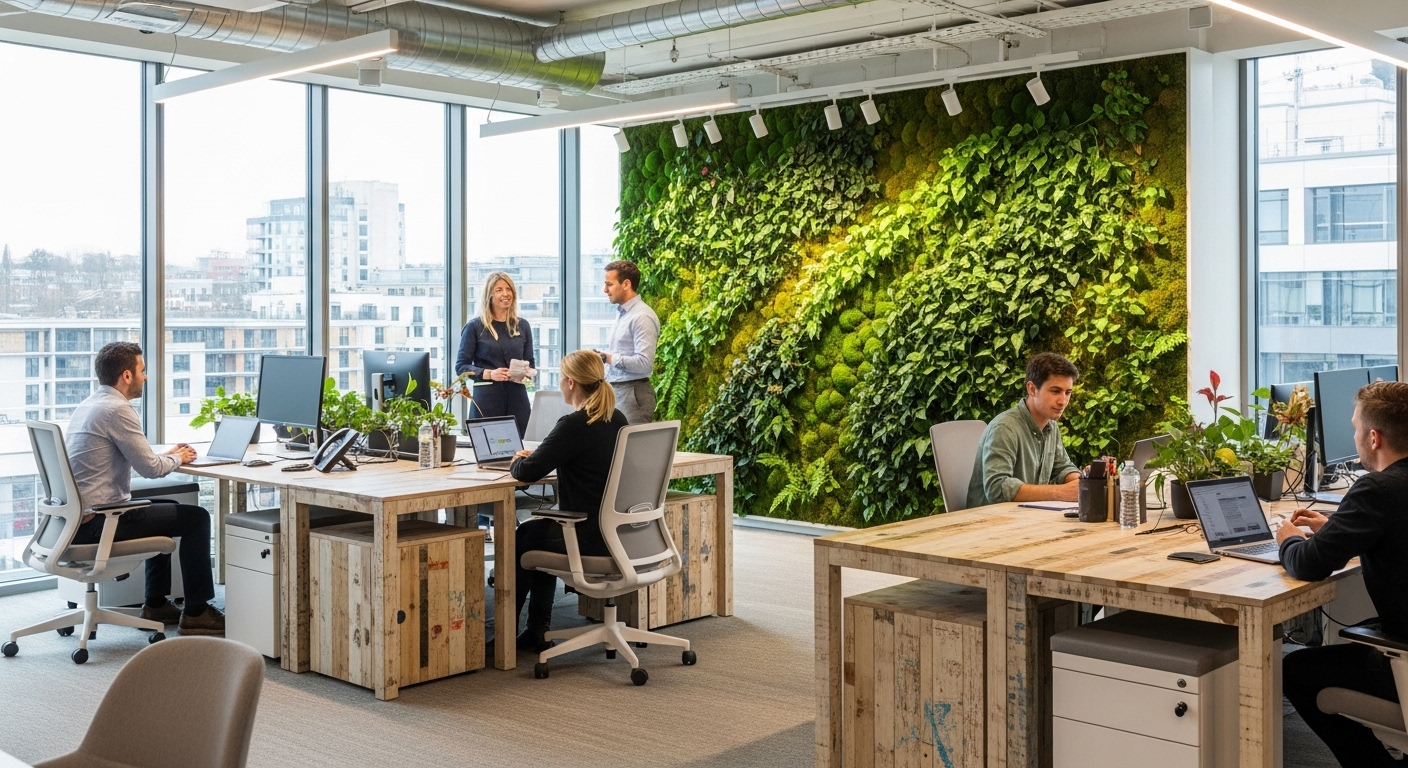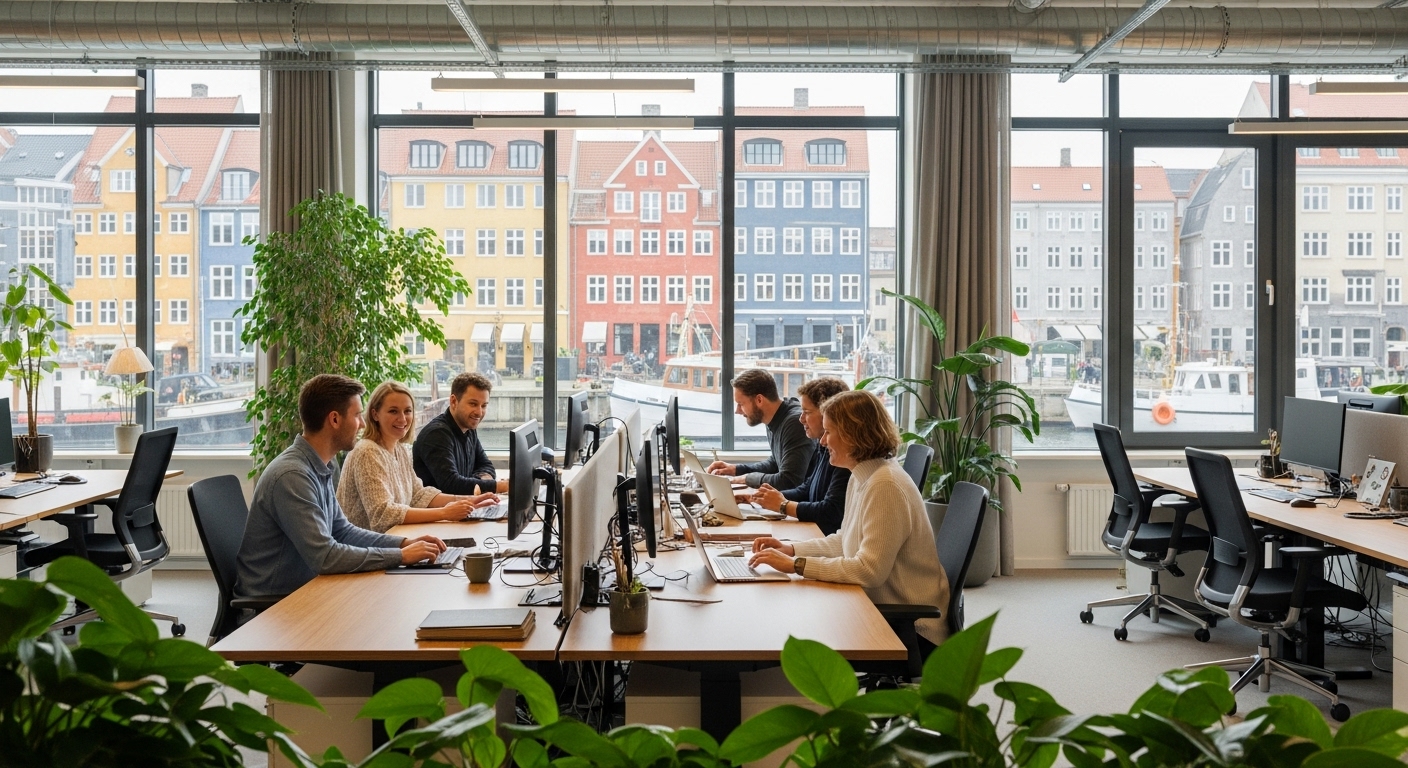The modern workplace is undergoing a radical transformation. No longer just a physical space for tasks, the office is evolving into a responsive, intelligent environment designed around its most valuable asset: its people. This shift marks a move away from pursuing technology for sheer efficiency and towards a more human-centric model. As recent trends show, the integration of the Internet of Things (IoT) and Artificial Intelligence (AI) is at the heart of this change, turning sterile office blocks into data-driven sanctuaries. These are spaces that not only boost productivity but also actively enhance employee well-being, foster collaboration, and champion sustainability. This guide explores the foundational pillars of this new approach, detailing how organizations can leverage smart technology to create a workplace that is both highly efficient and deeply human.
The foundation of intelligence: a primer on smart office sensors
The entire smart office ecosystem is built upon a single, fundamental element: data. This data is captured by a vast network of discreet Internet of Things (IoT) sensors that act as the central nervous system of the building. These devices are the silent observers, gathering real-time information that powers every automated adjustment and strategic insight. Occupancy sensors are perhaps the most crucial, using infrared or ultrasonic technology to detect human presence. Placed under desks, in meeting rooms, and throughout common areas, they provide a granular view of how and when spaces are used. This intelligence is the bedrock of agile seating arrangements, efficient energy use, and data-backed real estate decisions. Environmental sensors work in parallel to monitor and maintain the health of the workspace. These devices continuously measure ambient conditions like temperature, humidity, and, critically, air quality by tracking CO2 and volatile organic compound (VOC) levels. By ensuring the environment is always at an optimal state, businesses can directly impact employee comfort, health, and cognitive performance. Finally, light sensors measure the amount of natural daylight entering a space, allowing the building’s systems to dim or brighten artificial lights accordingly, creating a more pleasant atmosphere while significantly cutting energy costs. Together, this sensory network transforms the physical office from a static structure into a living, breathing organism that understands and adapts to its inhabitants.
From automation to intuition: the role of AI in workplace optimization
If IoT sensors are the nervous system of the smart office, then Artificial Intelligence (AI) is the brain. AI algorithms take the massive streams of raw data collected by sensors and translate them into intelligent, actionable outcomes. Its most immediate application is in sophisticated automation that goes far beyond simple timers. For instance, an AI-powered building management system doesn’t just turn off lights in an empty room; it learns occupancy patterns over time. It can predict energy needs, preemptively adjust HVAC systems before a large meeting begins, and even identify underutilized areas that could be repurposed for more collaborative functions. This predictive capability is what elevates a connected office to a truly smart one. Furthermore, AI is the engine behind strategic space utilization. By analyzing long-term data on desk usage, meeting room bookings, and foot traffic, AI can provide facilities managers with powerful insights. It can reveal that a department consistently needs more collaborative space on certain days or that a quiet zone is perpetually overcrowded.
As one 2024 report on workplace trends noted, organizations using AI for space analytics were able to optimize their real estate footprint by an average of 30%, leading to substantial cost savings.
This level of analysis allows businesses to move from reactive problem-solving to proactive, data-driven design, ensuring the workplace evolves in lockstep with the needs of its workforce.
Designing for well-being: personalizing the employee environment
A core principle of the data-driven sanctuary is the focus on individual well-being. Smart technology enables a level of environmental personalization that was previously impossible, directly impacting employee satisfaction and productivity. Lighting, for example, is a powerful factor in mood and focus. AI-driven lighting systems can adjust not only the brightness but also the color temperature throughout the day to align with human circadian rhythms, promoting alertness in the morning and a calmer state in the afternoon. Some systems even allow employees to tailor the lighting in their immediate workspace via a smartphone app, giving them a sense of control and comfort. Air quality is another critical area where smart tech enhances well-being. Integrated sensors constantly monitor for pollutants and CO2 levels, automatically increasing ventilation when needed to ensure a healthy and oxygen-rich environment, which has been proven to improve cognitive function. Beyond the ambient environment, smart technology is being embedded into the furniture itself. Smart desks can be programmed with user preferences for height, and integrated sensors can gently remind employees to stand or take a break, combating the negative health effects of a sedentary workday. This focus on creating a responsive, healthy, and personalized space transforms the office from a uniform, one-size-fits-all container into a supportive environment that actively contributes to the health of every individual within it.
The sustainable dividend: optimizing energy for cost and planet
In the modern corporate landscape, sustainability is no longer a peripheral concern but a central pillar of responsible business strategy. Smart office technology is a powerful ally in this mission, offering sophisticated tools to dramatically reduce a building’s environmental footprint. The most significant impact comes from intelligent energy management. Traditional office buildings are notoriously inefficient, heating, cooling, and illuminating vast, empty spaces. A smart office, however, operates on a principle of precise, on-demand resource allocation. Occupancy sensors ensure that energy is consumed only where and when it is needed. Lights automatically dim and turn off in unused areas, and HVAC systems scale back to a baseline level, preventing the colossal waste associated with static, 24/7 operation. This dynamic control extends to managing peak loads. An AI-powered system can analyze weather forecasts and building occupancy data to pre-cool or pre-heat spaces during off-peak hours when energy is cheaper and more readily available from renewable sources. This not only lowers utility bills but also reduces strain on the public energy grid. The data-driven approach also enables continuous improvement. Facility managers can access detailed analytics that pinpoint specific areas of inefficiency, allowing for targeted upgrades and a constantly optimized energy strategy. This creates a virtuous cycle of improvement, delivering significant financial savings while demonstrating a tangible commitment to environmental stewardship.
Seamless collaboration: connecting hybrid teams with smart tech
The rise of hybrid work has fundamentally changed the role of the physical office. It is no longer just a place for individual tasks but a central hub for collaboration, connection, and culture. Smart technology is essential for bridging the gap between in-office and remote team members, ensuring a seamless and equitable experience for all. Smart meeting rooms are at the forefront of this effort. They eliminate the friction often associated with hybrid meetings through automation. When a meeting is booked, the room can automatically activate the video conferencing system, adjust the lighting, and lower the blinds. Advanced features like AI-powered cameras that automatically track and frame the active speaker make remote participants feel more present and engaged. Integrated room booking systems and digital signage outside each room provide real-time availability, preventing scheduling conflicts and wasted time. This same technology extends to individual workspaces. With hot-desking and hoteling becoming standard, smart booking platforms allow employees to reserve a desk, a locker, or a parking space through a simple app before they even leave home. This removes uncertainty and ensures that every trip to the office is productive and stress-free. By providing these intuitive tools, organizations can transform their office into an agile and adaptable hub that supports the dynamic nature of modern collaborative work.
Beyond the hype: navigating the challenges of implementation
While the vision of a data-driven sanctuary is compelling, the path to implementation requires careful planning and a clear understanding of the potential challenges. The most significant hurdle is ensuring data privacy and security. A smart office, by its nature, collects vast amounts of data about workplace habits and employee presence. It is imperative for organizations to be transparent with their employees about what data is being collected and how it is being used. A robust strategy must be in place to anonymize personal data and protect the entire system from cyber threats. Another key challenge is the risk of a fragmented ecosystem. Investing in disparate, non-communicating technologies can lead to a clunky and inefficient user experience. True integration is key. A successful smart office relies on a unified platform where sensors, building systems, and user-facing applications can share data and work in concert. This requires a holistic strategy from the outset, rather than a piecemeal approach. Finally, technology is only as good as the people who use it. Overlooking the human element and failing to manage the change can lead to poor adoption rates. It’s crucial to involve employees in the process, communicate the benefits clearly, and provide intuitive interfaces that make interacting with the smart office systems effortless and empowering. By proactively addressing these challenges, organizations can ensure their investment in smart technology delivers on its full potential.
The evolution of the workplace into a data-driven sanctuary represents a profound shift in our understanding of what an office can be. By strategically integrating IoT sensors and AI-powered analytics, businesses are now able to create environments that are not only supremely efficient but also deeply attuned to the needs of their employees. This human-centric approach yields a powerful return on investment, reflected in enhanced productivity, higher employee retention, and a stronger organizational culture. The data shows us how to save energy, how to optimize our physical space, and, most importantly, how to build a healthier, more comfortable, and more collaborative community. The technologies that power this transformation—from occupancy sensors that manage energy consumption to AI that personalizes individual workspaces—are no longer futuristic concepts; they are practical tools for building a better future of work. As we continue to navigate the complexities of a hybrid world, the ability to create a workplace that is intelligent, adaptive, and supportive will be the ultimate competitive advantage, defining the leading organizations of tomorrow.





